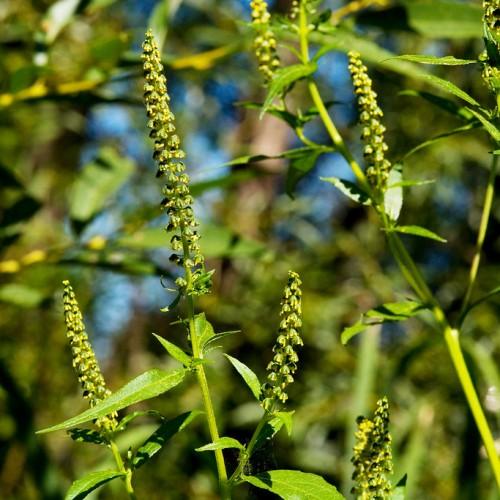
Great Ragweed
Ambrosia trifida
Watering:
Average
Hardiness Zone:
Flowers:
Flowers
Sun:
Sun, Partial Shade
Soil:
Sand
Leaf:
Yes
Growth Rate:
Low
Drought Tolerant:
Yes
Salt Tolerant:
Yes
Invasive:
Yes
Care Level:
Medium
watering
Silver Burweed should be watered regularly and deeply to ensure proper growth and health. During the summer months, water the plant at least once a week, allowing the soil to dry slightly between waterings. During the cooler winter months, water only once every 2 weeks. Always check the soil before watering to ensure it is dry before giving your Silver Burweed a good soak. Once the top few inches of soil are dry, the plant will be ready for another drink. Avoid over-watering the plant, as it can easily drown from too much water.
sunlight
Silver Burweed prefers to grow in full sun and requires at least 6-8 hours of direct sunlight each day. During the summer months, the plant is capable of withstanding more exposure to the sun to fulfill its light needs. In spring and fall, more indirect sunlight or sun rays for shorter periods of time will be beneficial. In the winter, the plant should receive some protection from direct sunlight, as too much cold sun can cause damage to this plant species.
pruning
Silver Burweed (Ambrosia chamissonis) should be pruned once a year in late fall or early winter when the plant is dormant. Pruning should be done to maintain the shape of the plant and to remove any dead or diseased branches. It should also be pruned to promote new growth and to maintain a healthy, well proportioned and attractive shrub. Before pruning, it is important to identify dead or diseased wood and make sure to remove only the parts that are unhealthy. This can be done by following the natural form of the shrub and gently pruning all of the overgrown branches 1 by 1. Keep pruning to a minimum - the goal is to thin out the shrub and improve air circulation. It is best to use hand pruners and avoid cutting too deeply as this can damage the plant. After pruning, apply mulch around the base to retain moisture.
